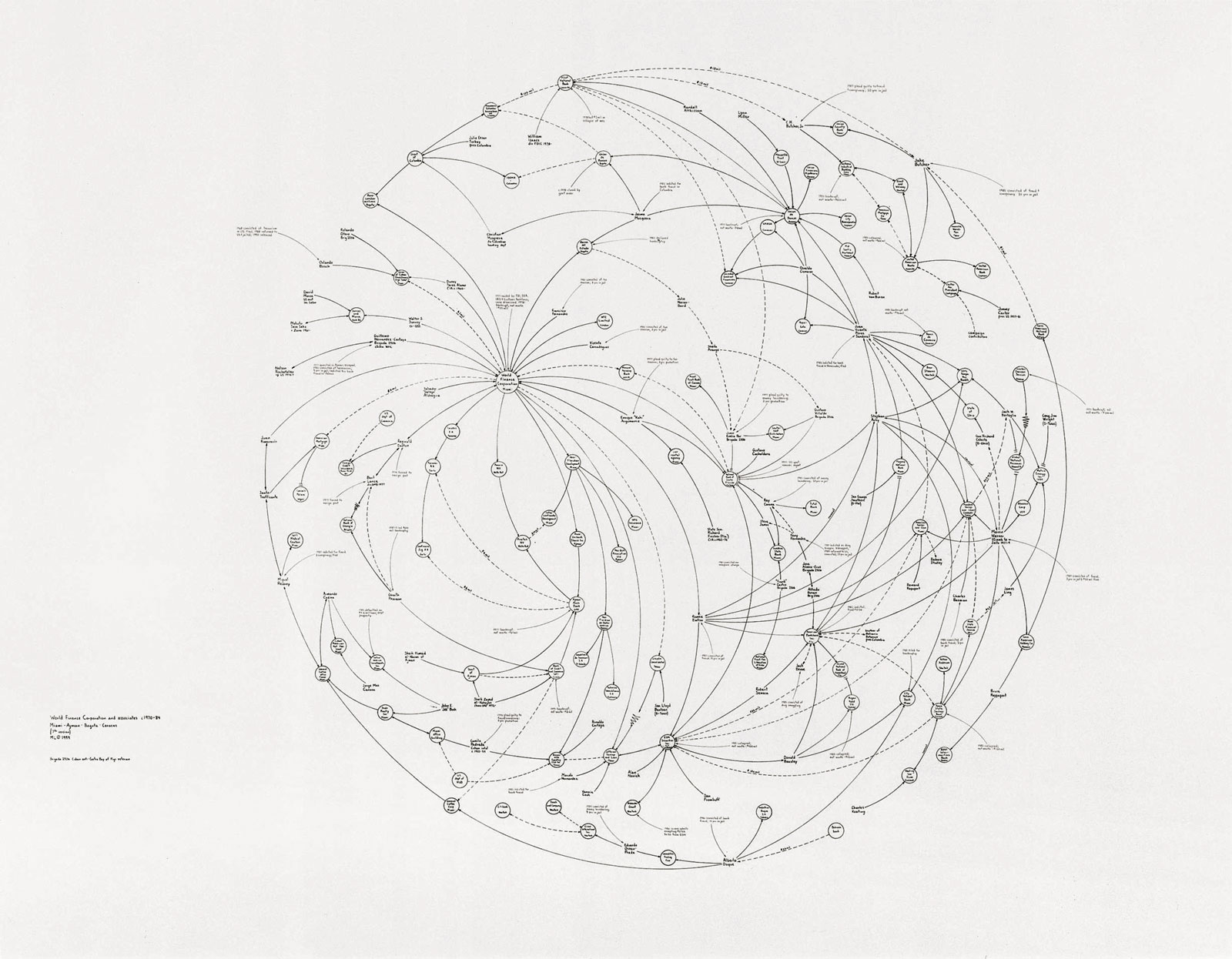Who’s in charge?

Mark Lombardi
Power dynamics are tied to organizational structures; the implicit, explicit and complicit contracts made between people within a group. The larger the group, the more likely advocacy, organizing, protest or boycotts will be warranted.
Using your own affiliations as content, we’ll look at how various groups organize themselves, what the benefits are to those structures, and how other organizational structures may be of value.
“If you want a politically engaged practice it’s not just about just making a political poster, but the way that we work together; how we do the work as well as what. If we want to enable radical change, we need to also question it in our own lives and work.” —Gemma Copeland
“All of us have a sphere of influence, a community within reach, that we can labor inside and help transition.” —Valerie Kaur
Week 1
Activity: To what groups do you belong…
Working at a table with two or three classmates, make a list or diagram of what groups you belong to. 15min
Share with your table. Start to unpack how those groups organize themselves? Who is in charge? What are the rules? How do the rules change? 15–30min
Share with the class what you learned, which group lends itself to further study for next week? Why? 45min
For Week 2
Design an ‘org chart’ for one of the groups that you listed in class.
Draw out the relational qualities of the humans (and potentially non-humans) within the group. Is it democratic? Is it hierarchical? How do decisions get made? Bring us into the working dynamimcs of the group using an appropriate material or form. This can be a list, a set of post-its, diagram, a physical mockup or digital outcome that communicates how the group organizes itself. What are the benefits and drawbacks to its structure? What are the rules? Who has an ownership stake? What makes it special? How can we learn from it?
Consider the form of the chart as it helps to reinforce the ideas you hope to convey.
Reference:
- Read “Democracy as Relationship” by Jeremy Bendik-Keymer, eflux
- Refer and add to are.na channels on Organizational Structures and Org Charts
Week 2
-
Show your diagram to the class; if a static diagram, print it for pin-up.
-
5pm. Gemma Copeland zoom from London. We will spend some time in advance of the discussion preparing. We will watch the below and create a set of questions in small groups.
- Watch Introduction to Common Knowledge Coop (~5min)
- Read “Showing Solidarity” from Caps Lock, Ruben Pater.
- Read “Common Knowledge” from Caps Lock, Ruben Pater.
- See Overview of Gemma Copeland
For Week 3
Either refine your org chart, taking class feedback into discussion, or alter your chart to show an alternate organization — perhaps ideal, distopian — to make a point.
Additional Bibliography
Suggested Readings
- “Defending ‘Open’ Democracy”, Hélène Landemore. Interview
- “Group Theory: a short course in relational aesthetics,” Mark Owens & David Reinfurt, Dot Dot Dot #7, 2003